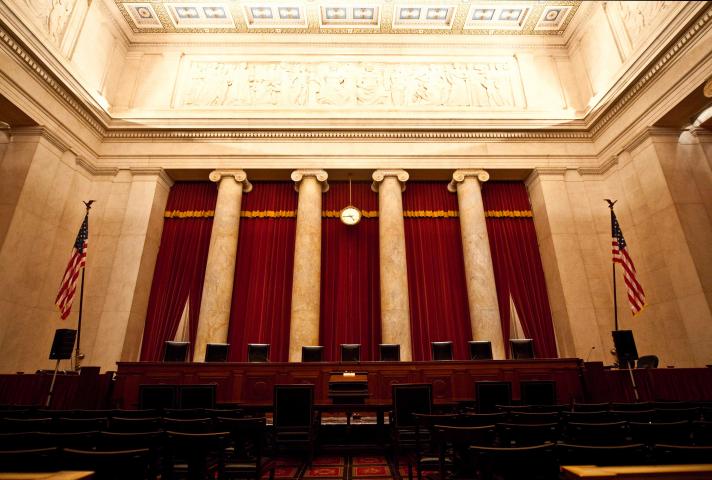Sightings
Jo Freeman: There’s Plenty To Do at the RNC – If You Have the Right Credentials
by Jo Freeman
Every national nominating convention has plenty of auxiliary events, some authorized, some not. Getting space can be a challenge; getting the word out even more so. But they do it nonetheless. Press were given a RNC 2024 Master Event Calendar, which was updated a few days later. Events began on Sunday and ended on Thursday. The actual convention sessions were just one item on the list. The calendar said if an event was Open or Closed to press, and also whom to contact to register. I’m going to describe some of the events, including a couple I went to, and a couple I was turned away from.
Since my focus is on women, I obviously wanted to go to those events – if I could.
The National Federation of Republican Women is the largest grassroots Republican women's organization in the country with hundreds of clubs. Founded in 1938, its members made the phone calls and knocked on the doors that elected Republican candidates for decades. It’s Tuesday luncheon featured Arkansas Governor Sarah Sanders. The Master Calendar said it was SOLD OUT and they wouldn’t let me in. I was able to get into their lounge at the Fiserv Forum Wednesday evening, where I was repeatedly asked if I was a member, and if not, would I join. “I’m press,” I said. “I can’t join anything partisan.” I then said: “What brings you here?” On hearing that, finding anyone willing to chat with me was like pulling teeth.
Moms for Liberty met in a concert hall that afternoon. I had pre-registered, and I got in. From high in a balcony seat I listened to several people talk about the evils of transgenderism. It’s webpage says WE BELIEVE Power Belongs to the People. Sound Familiar? With a focus is on parental rights, it wants to “STOP WOKE indoctrination.”
Tuesday I went to “The New Mavericks” reception co-hosted by the Black Republican Mayors Association and the Georgia Republican Party. They honored Sen. Tim Scott, four Congressmen and two Georgia delegates – all male. There was only one mayor on stage, from Aurora, IL. The chair of the Georgia Republican Party was the one white man on the stage. At that event, women served; they didn’t speak. The RNC reported that 55 delegates to the 2024 convention are Black, up from 18 in 2016.
I missed the Independent Women’s Forum toast to “Women Who Make Our Country Great” because I went to Convention Fest: The Official Delegate Experience, which was held in the streets outside the Fiserve Forum and Baird Hall as well as some space inside Baird. To get to that one you not only needed a credential of some sort, but a USSS pass (which I have).
Concerned Women for America parked its pink bus across from the Baird Center the week before the RNC. No one was home. When Convention Fest opened on Tuesday afternoon, they set up a pink tent, from which its leaders preached to whomever passed by. It calls itself “the nation’s largest public policy women’s organization” but its focus is evangelical Christian. The slogan on the side of its pink bus captures this emphasis: “She Prays, She Votes.” A prayer precedes each sermon.
 Jo Freeman Writes: Anti-Lynching Bill Still Can’t Pass Congress
Jo Freeman Writes: Anti-Lynching Bill Still Can’t Pass Congress
Jo Freeman writes: The first anti-lynching bill to get out of committee was introduced in April 1918. Known as the Dyer Anti-Lynching Bill, it passed the House in 1922 but was filibustered by Southern Senators. For the next forty years nearly 200 anti-lynching bills were introduced into almost every Congress and occasionally passed by the House. In the Senate, Southern Senators kept them from coming to a vote. The current bill was introduced by Rep. Bobby Rush (D IL), a founder of the Illinois Black Panther Party in 1968. H. R. 35 passed the House by 410 to 4 in February, 2020. It had already passed the Senate but came before it again due to a small change in the House version. That’s when Sen. Paul put his hold on the bill. more »
 An Update To: "There's No Crying In Baseball"* ... Oh, Yes, There Is ... "Don't you know how hard this all is?**"
An Update To: "There's No Crying In Baseball"* ... Oh, Yes, There Is ... "Don't you know how hard this all is?**"
Tam Martinides Gray: My team is the San Francisco Giants ... and it always has been since it was The New York Giants in The Bronx. I started going to games with my father, Ernie, when I was a year or two older than kindergarten age ... I have rarely missed a season that I didn't see a game in person or on television, except when I lived in Europe for a couple of years. I've married two men who didn't grow up sitting on those hard, wooden-slatted seats. But my husband today understands my state of mourning regarding what could become 'the lost season.' My mother told me that she was thrilled that I had taken to the game; this now meant she would never have to attend another game, ever, especially those games that were double-headers. Pop and I loved those games. more »
 Supreme Court Surprises The Public in LGBTQ Ruling: What is Sex Discrimination?
Supreme Court Surprises The Public in LGBTQ Ruling: What is Sex Discrimination?
Three leading precedents confirm what the statute’s plain terms suggest. In Phillips v. Martin Marietta Corp., 400 U. S. 542, a company was held to have violated Title VII by refusing to hire women with young children, despite the fact that the discrimination also depended on being a parent of young children and the fact that the company favored hiring women over men. In Los Angeles Dept. of Water and Power v. Manhart, 435 U. S. 702, an employer’s policy of requiring women to make larger pension fund contributions than men because women tend to live longer was held to violate Title VII, notwithstanding the policy’s evenhandedness between men and women as groups. more »
 While Rising Carbon Dioxide Levels in the Atmosphere Cause Great Concern Worldwide, Most of Us Pay Little Attention to Risks Posed by CO2 Changes Indoors
While Rising Carbon Dioxide Levels in the Atmosphere Cause Great Concern Worldwide, Most of Us Pay Little Attention to Risks Posed by CO2 Changes Indoors
How do the new sensors work? They’re easy to operate -- in fact there is nothing to operate. They indicate changing CO2 levels by changing color, like pH strips we are familiar with. If the color indicates a high level of CO2 the person would know that they need to open a window, go outside or adjust the building HVAC. The sensor operates without any electrical power. High surface area also means we need very little material, so the sensor can be very small and lightweight. more »






